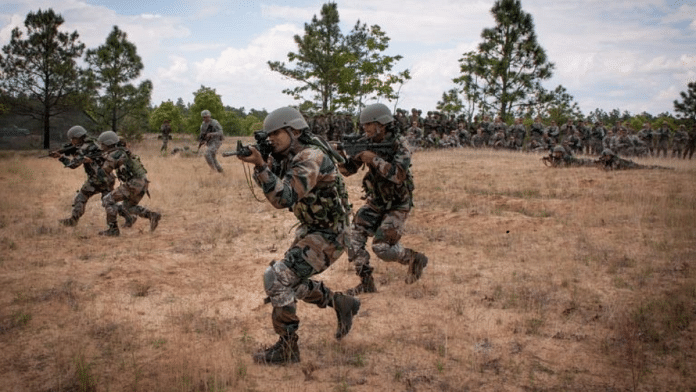India has been slapped with an additional tariff hike by the mercurial Donald Trump. A great admirer of Vladimir Putin until recently, Trump now takes umbrage at any country seen to be trading oil with Moscow. So India has been hit once again, ironically just a day after the Defence Acquisition Council declared its intention to spend a lot of money on American-sourced equipment. The trader in Trump is clearly not satiated by India’s sweeteners, but there is no reason for New Delhi to buckle under Washington’s pressure.
The recent DAC announcements are in line with Prime Minister Narendra Modi’s declaration that Operation Sindoor is ongoing. And it is a good sign, as a dispassionate analysis of the aerial skirmish has not yet been completed. Since the operation has been declared ongoing, there is no compulsion to hurry the process, offering enough time to be thorough with the post-operation analysis. Some aspects of the operation will change hue as more information is made available to the services.
Information in this era is largely created by the accumulation and interpretation of data. Sources of data on the battlefield are manifold, from small helmet-mounted cameras of frontline infantry soldiers to the radars installed on top-of-the-line combat aircraft. Everything that falls in this wide operational spectrum creates data, and analysing it is a Herculean task. Especially given that decisions have to be made and appropriate orders issued in a very short time. But ironically, adding technological tools may not be the answer.
The Army has plans for a technology thrust in the near term, including the use of artificial intelligence (AI) to support decision-making. While well-intentioned, this may have unintended consequences. Worldwide, there is a wave of interest in AI tools for all spheres of life, including the two most important fields: medicine and the military. These fields deal with human lives, a sovereignty that must not be devolved to machines.
Also read: Rudra, Bhairav commandos, Shaktiman to drone platoons—how Army is transforming for future wars
Avoid dependence on AI
In real-time combat, a commander authorised to press the trigger must compress information from various sources within seconds and make the correct decision. Accidents happen all the time, and some of them can be tragic. However, despite the pressures of time, live action, and compressed operational space, correct decisions far outnumber the mistakes. The human mind is far more capable in this arena than AI could ever be, and it must always occupy the upper domains. Monopoly over combat must remain only with trained soldiers.
The AI virus is deeply contagious and must be carefully monitored. The best decision-making processes in the military keep out the fog of war and the cacophony of shrapnel. They remain focused on the operational tasks and the means required to accomplish the mission. From a combat section to a corps commander, everyone has roles and responsibilities commensurate with their physical boundaries. Should they rely on the strength of their training and commander, efficiency is guaranteed.
This is not to say that technology should be avoided altogether. It enhances operational effectiveness all the time. What we must stress, however, is the human mind’s dominance over technology rather than dependence on it.
All acquisitions and the induction of every new system must be a multiplier, not just a feather in the cap. In today’s combat spectrum, it is vital that military assets are compatible across the three services as the operational space is increasingly shared and even overlapping. Nothing makes this more apparent than air defence.
Each service influences airspace individually and coordinates with the others. But that coordination leaves much to be desired. So, the DAC’s announcement of upgrading the Air Force’s quick reaction SAKSHAM/SPYDER air defence system is welcome. This will also enable the fusion of this weapon system with the Integrated Air Command and Control System. This is where technology and the human mind are tested to the fullest—speed coupled with utmost accuracy. Despite the AI’s recent progress and various advances in remotely piloted vehicles, the final analysis of the air environment must always be human.
Manvendra Singh is a BJP leader, Editor-in-Chief of Defence & Security Alert, and Chairman, Soldier Welfare Advisory Committee, Rajasthan. He tweets @ManvendraJasol. Views are personal.
(Edited by Prasanna Bachchhav)




